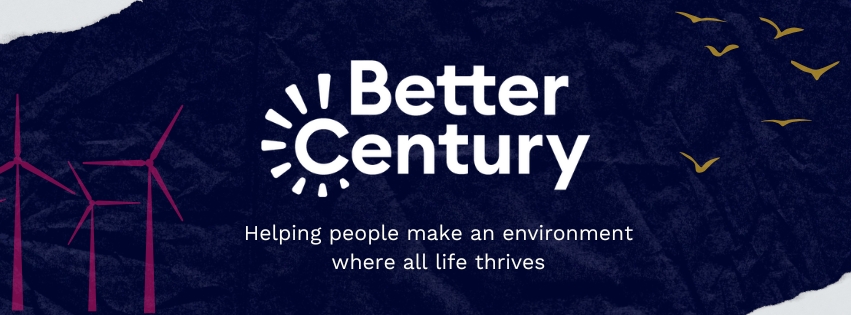
Personal carbon emissions are confusing. You are given conflicting advice and often you don’t know what will make the biggest difference.
Our dynamic community-created guide is here to help everyone navigate how to reduce personal carbon emissions.
But remember, our guidance doesn’t just stop with this post. You can subscribe to our monthly email for helpful tips and updates on becoming net zero and nature positive. Plus, you can sign up to the NetPositiveLifeApp to calculate your own carbon footprint and create a plan to reduce it.
Why do carbon emissions matter?
At some point between 2025 and 2040 the average global temperature will exceed 1.5 degrees Celsius, and could be a lot higher. A 2 degree rise is likely to cause run-away climate change. Within the next 10 to 30 years, if we carry on as we are, severe weather events will cause major food shortages and will disrupt entire economies. This is called the climate breakdown.
Climate change is caused by man-made carbon emissions. We have disrupted the carbon cycle by burning coal, oil and gas, and by farming intensively. This causes the release of carbon-based gases which sit in the atmosphere. They absorb energy from the sun and act like a thermal blanket around the earth.
As more carbon-based gases are released, the concentration increases, thickening the blanket and storing energy. This energy results in an increase in temperature and severe weather events.
Carbon is naturally taken out of the atmosphere as plants grow. If we are able to ensure that the amount we release is equivalent to the amount taken in by plants then we could tackle the issue of climate change.
Can I really make a difference?

37.4 billion tonnes of carbon based gases were released by the world in 2023. To stop a climate breakdown we need to stop producing these gases between 2040 and 2050. Some say it needs to be much earlier. The UK’s own Committee on Climate Change recommend the UK being at net zero by 2040 and to halve carbon emissions by 2030.
There are 7.53 billion people in the world. Each one of us has a responsibility to stop the climate breakdown. Our choices make a difference. Over half of all carbon emissions are within our direct control.
In the western world we produce far more carbon than in other countries so what we decide to do can have an even bigger impact. If we lead by example and get others to do the same, we can create a sea of change in culture.
Let’s get on with it!

Where do my carbon emissions come from?
Determining where you carbon emissions come from isn’t as straightforward as you would imagine. The UK reports the carbon emissions it produces but does not report on the emissions of all products bought, or all travel taken from our country to outside our territory.
Our break down is based on data collected by various government sources. We have also cross referenced our calculations with other scientific reports and studies to determine baseline impacts. We accept there are assumptions and missing pieces of data, but believe these are some of the most accurate approaches taken to establish carbon emissions figures.
If you want a more personalised calculation of your carbon emissions use the NetPositiveLifeApp to take your current lifestyle into account.
Food and drink

Food accounts for a quarter of your carbon emissions (See how we got that figure here).
What you’ve been told about moving to a plant based diet is true. If you move to a plant based diet it will cut your food and drink emissions in half. If you are able to improve the way food is produced and transported to you before receiving it, this can cut your impact in this area by a quarter.
Heating and Electricity for your home

The easiest thing to do at home is to shift to 100% renewable energy supply, that will slash your carbon emissions by 10%.
The use of natural gas to heat your home accounts for the lion’s share of these emissions. Through energy efficiency measures you can greatly improve your use of heating and therefore natural gas, and when you replace your boiler you may well want to think about alternatives.
Personal Daily Travel

Most people use a car to get to school or work. If you want to use a car, the easiest way to tackle these emissions are by moving to an electric vehicle. If you can’t afford that then public transport, cycling and walking can be great for your health and will have an even greater effect on cutting emissions. We have a great breakdown of the emissions saved based on how often you choose to walk and cycle per year. Check it out here.
Leisure, Lifestyle and Holiday
About 25% of your emissions comes from travel – if you don’t fly, use an electric vehicle and choose really sustainable locations for holidays you can save a great deal (Check out the carbon saved by reducing air travel here). Around 4% of your emissions are more difficult to ditch – mobile phones, televisions and all types of mod cons have running, manufacturing and transport impacts.
The Trajectory to Zero Emissions Living
The average carbon dioxide (CO₂) emissions per person globally are approximately 4.5 metric tonnes per year as of the most recent data in 2024. However, this average varies significantly across regions. For example, emissions are much higher in developed countries compared to less industrialized nations.
In the UK the average citizen produces over 13 metric tonnes of carbon per year (See how we got this figure here).
To avert a two degree rise in temperature we need to halve carbon emissions by 2030, with this reducing to net zero between 2040 and 2050.
It seems daunting to move to half our personal carbon emissions, but it is possible! By slowing down our lifestyles, being more physically active, buying less and learning new skills, we could all find ways of living which could make us happier. We would also be better prepared for a climate change future by showing that we have found ways to adapt, creating more security for our families.
We will always produce some carbon from the purchase and use of tools, clothing and equipment. In time this will go down as manufacturing becomes more efficient and we decarbonise the energy and transport sectors. Much of this latent carbon which is difficult to get rid of can be mitigated through changing the way we use land. So zero carbon is possible!

How an individual can reach the target
In the below sections tonnes of carbon is converted to kilograms of Carbon.
(Quick reminder! 1 tonne of Carbon = 1000kg of Carbon)
This is so you can be more granular with the data.
Food – 3133 Kilograms of Carbon (kgCO2e)
To eradicate your carbon footprint from this source entirely you need to eat vegan, locally and sustainably produced products. 1500 Kilograms of Carbon is produced by eating the average amount of animal based products, with the majority of this coming from beef and lamb. You can make a big dent in this by simply reducing how much meat you eat. If you halved your meat consumption and made beef a luxury you could get your food and drink emissions down. Calculate the direct impact of your food-related activities using the NetPositiveLifeApp planning tool.
Heating and Electricity for your home – 1600 Kilograms of Carbon (kgCO2e)
Most homes can become a lot more energy efficient. Changing your method of heating in the next ten years to air or ground source heat pump, if combined with 100% renewable electricity supply would cut your emissions from this source entirely. Your home could also help cut emissions from other sources by installing solar panels or other forms of renewable energy.
It is possible to make your home entirely energy self sufficient by using battery storage, with excess energy used to power your car, which in the event of climate breakdown would be a very good bet!
Daily and Holiday Travel – 3319 Kilograms of Carbon (kgCO2e)
Just by stopping flying you can cut out nearly a tonne of carbon. By travelling by train, bicycle or electric powered vehicle on holiday you would trim another three quarters.
We have all seen the impact of people travelling daily in their cars. It’s causing air pollution issues, releasing tonnes of carbon emissions and making daily travel a nightmare. There are great alternatives to a daily commute which can improve the health of you and your family and make you less stressed! Moving onto a bike, walking or using public transport, or a mixture of them can cut the emissions from this source entirely, and save you money. Moving to an electric vehicle is a good alternative and if used daily could well pay itself back in around 8 years.
Determine the direct impact of your travel-related activities using the NetPositiveLifeApp planning tool.
Things and Services – 4124 Kilograms of Carbon (kgCO2e)
The things you buy and your waste impacts climate change too as a proportion of this gets burnt. If production of virgin products are reduced significantly this could save another quarter. Emissions from services you use are much more difficult; for example, you have to be very choosy about who supplies your technology and how you use your technology.
Planning your pathway to zero emissions
Adventurous under 25 year olds

You’ve mostly got inherited carbon at this age as you’re likely to be living at home, have a level of dependency on car users and could well be dragged off on family holidays. The things in your direct control are what you eat and buy, and where you choose to travel. You probably want to explore but don’t want to feel guilty for doing so.
You can make a difference, this is how you can get your emissions down to 60% of the average UK baseline:
- Cut your dependency on car owners by moving onto a bike or invest in an electric scooter, or bike. Better Century members can even help you create a financial case to put to your parents to help you buy one!
- Plan your journeys by train, go interrailing in the summer instead of flying off on a long haul flight.
- Reduce the amount of meat you eat or cut it out completely. Your example may even encourage other family members to do the same.
- Lobby your family to move to 100% renewable energy and look into energy efficiency measures at home and lobby for these to be implemented. If you achieve this you can take the credit.
Savvy Millennial (26 – 40)

A lot of your carbon is in your control now but it’s likely your arm is twisted as there’s no-where to rent with zero carbon heating and you certainly couldn’t afford it for your first house. You have got control over how much you travel and how you travel, and you could potentially buy electric powered transport. At this stage you will be paying into a pension and looking to save, meaning your money can make a difference as well!
Here’s your plan to get your emissions down to 60% of the average UK baseline:
- Use public transport, a bike or electric powered vehicle to get to work.
- Ensure your house is powered by 100% renewable electricity.
- Use electric vehicle car share schemes so potentially don’t even need to buy one!
- Arrange your holidays well in advance and book train journeys or hire an electric vehicle for the holiday.
- Reduce the amount of meat you eat or cut it out completely.
And as you’ve got influence and decision making power about how you save your money you can also use that to drive down carbon emissions:
- Set up ISAs (for as little as £5) and other investments that will improve the way we power ourselves and create natural or built infrastructure.
- Push for your workplace to divest its pension fund or set up pension in solely renewable energy.
Responsible 40 – 60 Year Old

At this stage, if you own a house, your carbon is in your control. Your household is your own and in having a family you also make a decision about how you get around and what you eat. It’s likely that you love your holidays at this stage and maybe you aren’t prepared to give these up immediately. Your decent savings could be used to retrofit your house with energy efficiency or renewable energy measures, with decent pay back periods.
To have your emissions to 60% of the average UK baseline:
- Decarbonise your house by 2030 by replacing heating systems, installing renewable energy and moving to 100% renewable electricity.
- Reduce your emissions from food drink by minimising the amount of meat you eat, and start growing more food at home.
- Start using a car share scheme for electric vehicles, or buy one yourself.
- Keep special holidays abroad by flying once every two or three years and otherwise travel in Europe using an electric car or travelling by train.
Similar to millennials, you can also move your investments having huge impacts on how the economy develops.
Moving onto retirement 60+

You are thinking about your retirement or are in it, your kids have left home or are about to, you are free! Your thoughts turn to travel and lifestyle and you potentially are thinking about moving to a smaller home. It’s likely your savings are significant but you want to ensure security for yourself.
Having your emissions to 60% of the average UK baseline is very possible but you need to manage your lifestyle. Almost everything is the same for the house owning 40-60 year old but the following will also make a difference:
- Buy an electric vehicle so you have security in getting around.
- Grow your own food in your garden and potentially start growing via an allotment.
- Be very choosy about what you buy and make a special effort to buy regular food products that use minimal plastic packaging and are sustainably sourced.
- Get involved in community group and influence councils to improve nature, and help promote low carbon lifestyle where you live.
Your money can also be a game changer for climate change. Find ways of moving your investments so your money can be a tool for change.
A Zero Carbon Economy
As government and companies account for 40% of emissions, and control huge swathes of land, we need them on board to create a zero carbon economy. But they respond to market forces and public opinion. If we are able to create a sea change in culture, as in Sweden where ‘flight shaming’ has reduced the number of flights by 43%, we can drive change from the ground up.
Where individuals learn what things they need to do, they are able to lead others through the change. If money is moved into positive practices market forces will drive change. Demonstrating what’s possible on an individual and household level, as well as at a council level, will help governments make informed decisions about how to best support the transition.
The chances of keeping below a 2 degree rise in temperature are slim, but are well worth fighting for, and if we manage it, this will be the biggest achievement of humanity, and will truly make a century we can all be proud of!
Learn, Be Inspired and Help Others
Better Century has been established to support everyone in creating an environment where all life thrives this century. We all have a part to play in making that happen.
Follow Better Century on Facebook as a starting point. We’re building a community of net zero and nature positive pioneers who are pushing to make a difference.
We have a limited time to act so please start on your journey today. You can support people by telling them what you’re doing on our page. Your experience will undoubtably help others. Follow us and be the change you want to see in the world!
About this Guide
This guide is a dynamic guide created by Better Century and its community. We will update the guide upon request from people who provide insights into the personal carbon footprinting. Simply send an email to info@bettercentury.org.
The sources used to create this guide are as follows:
- How much CO₂ does the world emit? Which countries emit the most?
- 2013 Leeds University analysis of UK carbon emissions
- 2012 Carbon trust personal carbon allowances paper
- 2013 Committee on climate change paper on UKs carbon footprint
- UK provisional greenhouse gas emissions 2018
- Independant report on Carbon Trust Paper 2006
- BBC Climate Change Food Calculator World Bank’s Per Capita Carbon Emissions
